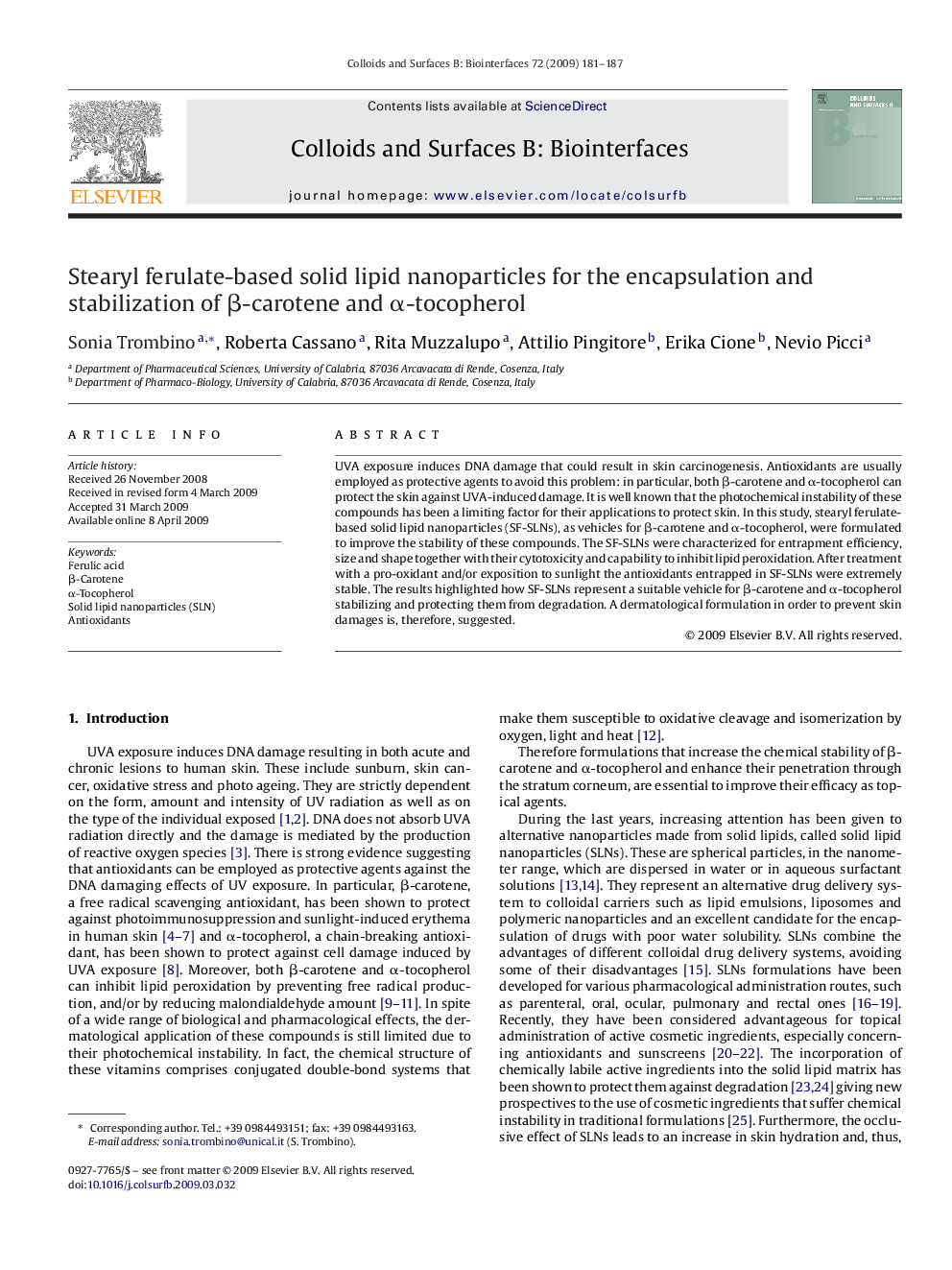| Article ID | Journal | Published Year | Pages | File Type |
|---|---|---|---|---|
| 602072 | Colloids and Surfaces B: Biointerfaces | 2009 | 7 Pages |
UVA exposure induces DNA damage that could result in skin carcinogenesis. Antioxidants are usually employed as protective agents to avoid this problem: in particular, both β-carotene and α-tocopherol can protect the skin against UVA-induced damage. It is well known that the photochemical instability of these compounds has been a limiting factor for their applications to protect skin. In this study, stearyl ferulate-based solid lipid nanoparticles (SF-SLNs), as vehicles for β-carotene and α-tocopherol, were formulated to improve the stability of these compounds. The SF-SLNs were characterized for entrapment efficiency, size and shape together with their cytotoxicity and capability to inhibit lipid peroxidation. After treatment with a pro-oxidant and/or exposition to sunlight the antioxidants entrapped in SF-SLNs were extremely stable. The results highlighted how SF-SLNs represent a suitable vehicle for β-carotene and α-tocopherol stabilizing and protecting them from degradation. A dermatological formulation in order to prevent skin damages is, therefore, suggested.
